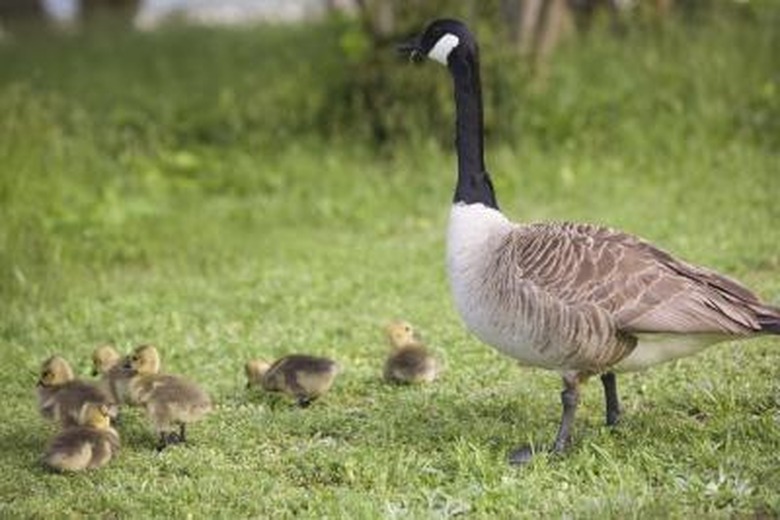Which Birds Make Their Nests On The Ground?
A wide variety of birds nest on the ground, including game birds, shore birds, waterfowl and some song bird species. This allows the bird to make the best use of cover within the habitat. In some cases, the nesting occurs in areas such as open prairie of shorelines with few trees. In other cases, the nesting habits match the feeding and roosting habits of the ground-dwelling species.
Game Birds
Game Birds
Game bird species such as grouse, turkey and pheasants all nest on the ground. Typically the birds create a small depression in the ground lined with grass and possibly even feathers. Young game birds hatch more fully developed than the tree nesting variety and can run to escape predators almost immediately after birth. The young and hen continue to use the nest as a place of shelter.
Shore Birds
Shore Birds
Shore birds such as plovers, avocets, terns and sandpipers all nest on the ground near shore lines. Some shorebird species create relatively rocky nests while others choose grassy or weedy areas for nesting. Some species are known for mixed clutches or nests. In these situations, more than one female of the species deposits eggs in a single nest. Shorebird nesting success is adversely affected by rising waters that can flood the nesting sites.
Waterfowl
Waterfowl
Most waterfowl, with exceptions such as the wood duck, are ground nesters. This includes most of the duck and all the goose and swan species. These birds spend time on the ground, in the water, or flying, but never set in trees. Waterfowl nests are close enough to water to allow the female to lead the young to the water which ultimately is its best protection from predators such as raccoons or foxes.
Song Birds
Song Birds
A minority of song bird species nest on the ground. The wood and hermit thrushes, the northern junco, meadowlark and bobolink all nest on the ground, even in areas where trees and shrubs are available. These species commonly form grass-lined nests. The song bird young hatch without feathers or down and are unable to walk or run. This leaves these species vulnerable to predators in the period after they hatch.
Cite This Article
MLA
Allen, Keith. "Which Birds Make Their Nests On The Ground?" sciencing.com, https://www.sciencing.com/which-birds-make-their-nests-on-the-ground-12003447/. 21 July 2017.
APA
Allen, Keith. (2017, July 21). Which Birds Make Their Nests On The Ground?. sciencing.com. Retrieved from https://www.sciencing.com/which-birds-make-their-nests-on-the-ground-12003447/
Chicago
Allen, Keith. Which Birds Make Their Nests On The Ground? last modified March 24, 2022. https://www.sciencing.com/which-birds-make-their-nests-on-the-ground-12003447/
